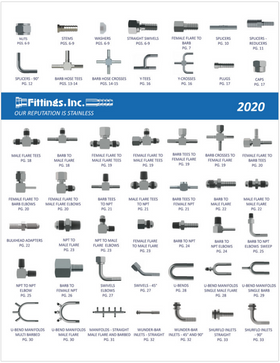
Reassessing Global Sourcing Strategy: The Case for Strategic Diversification
By Mark Gannon
As tariff policies shift and supply chain vulnerabilities continue to surface, many U.S. companies are re-evaluating the balance between domestic and overseas sourcing. For procurement leaders, this is not a question of patriotism—it’s a matter of business resilience, cost structure, and long-term value.
1. Are We Overexposed to a Single Country or Supplier?
Concentration risk remains one of the most significant yet underappreciated exposures in global sourcing strategies. Whether driven by geopolitical shifts, natural disasters, or regulatory volatility, disruptions to single-source suppliers—especially those concentrated in China or Southeast Asia—can paralyze operations.
Consider the semiconductor shortage during the COVID-19 pandemic. Automotive OEMs reliant on a small number of Asian suppliers were forced to idle production for months. Strategic dual sourcing and geographic diversification aren’t just risk mitigation—they’re a hedge against business interruption.
2. Why Was the Supplier Offshore to Begin With?
Many sourcing decisions date back decades and are rarely re-examined. While the original move offshore was likely cost-driven, the reasons for staying may be very different: quality, reliability, technical capability.
But ask yourself this: If tariffs, shipping disruptions, or geopolitical risk push the total cost of ownership (TCO) beyond the original savings—does the rationale still hold?
For example, a mid-sized U.S. industrial equipment manufacturer found that after 25% tariffs, the TCO of their Chinese supplier surpassed that of a U.S.-based partner—even before accounting for expedited shipping or currency fluctuations. By building in a domestic supplier, they regained leverage and supply chain agility.
3. Are We Aligned with Industry Benchmarks?
Procurement leaders often operate in silos. But in evaluating whether to reshore or diversify, it’s essential to benchmark against industry peers. If your competitors are equally dependent on the same regions or supplier networks, there may be shared lobbying or co-sourcing opportunities that reduce risk without compromising scale.
Instead of reacting in isolation, industry consortia could collaboratively fund domestic supplier development or advanced tooling for reshoring initiatives. This spreads risk and cost more efficiently.
4. Rebuilding Domestic Capability: What’s at Stake?
Resilience is not rebuilt overnight. The long-term cost of losing domestic manufacturing capabilities is becoming more visible in sectors like defense, pharmaceuticals, and heavy machinery. In many cases, even when there is demand, the equipment, workforce, and technical know-how are no longer available.
During the early pandemic, major U.S. healthcare systems struggled to source PPE domestically—not because of price, but because production capacity had been almost entirely offshored over two decades. Rebuilding it now requires an enormous upfront investment.
Sourcing leaders should consider allocating a strategic portion of their supply chain to U.S.-based suppliers. This not only provides an option in times of crisis but also contributes to rebuilding the ecosystem needed for future flexibility.
5. The Bottom Line: Don’t Confuse Short-Term Price with Long-Term Value
Cost remains a critical factor in sourcing decisions—but it should not be the only factor. Total cost of ownership, supplier resilience, lead time risk, and alignment with corporate ESG or reshoring objectives all shape the real value of a sourcing strategy.
Would a modest 5% increase in component cost be justified if it secures supply continuity, enhances negotiating power, and reinforces the company's reputation for reliability? For many organizations, this is not a cost—it’s a calculated investment in operational resilience and long-term enterprise value.
Conclusion
In today’s environment, global sourcing is no longer just a procurement function—it’s a board-level concern. Strategic sourcing leaders should approach the domestic vs. overseas question not as a binary choice, but as a portfolio decision. Diversification, optionality, and resilience are the new drivers of competitive advantage.

